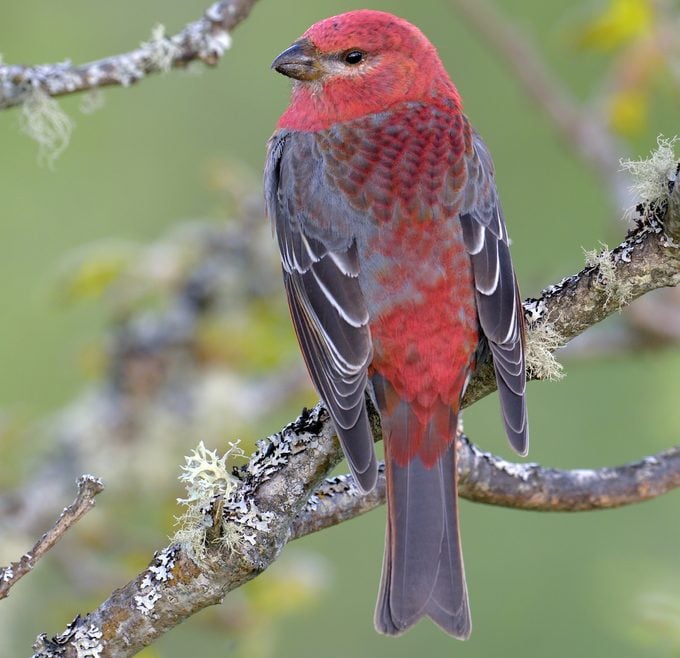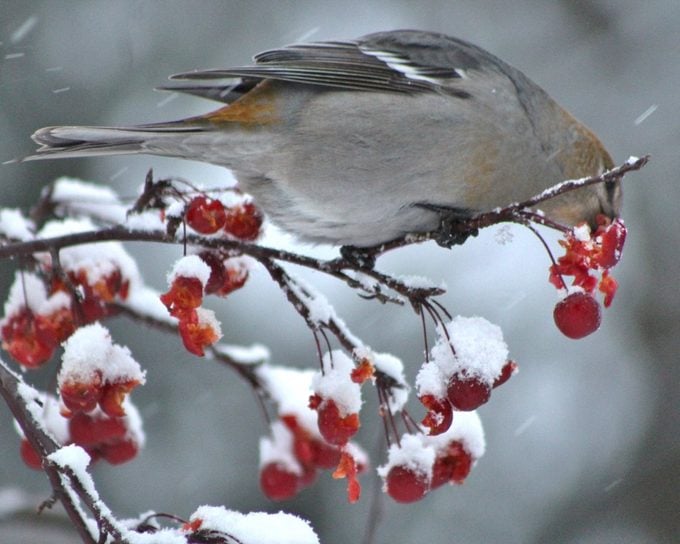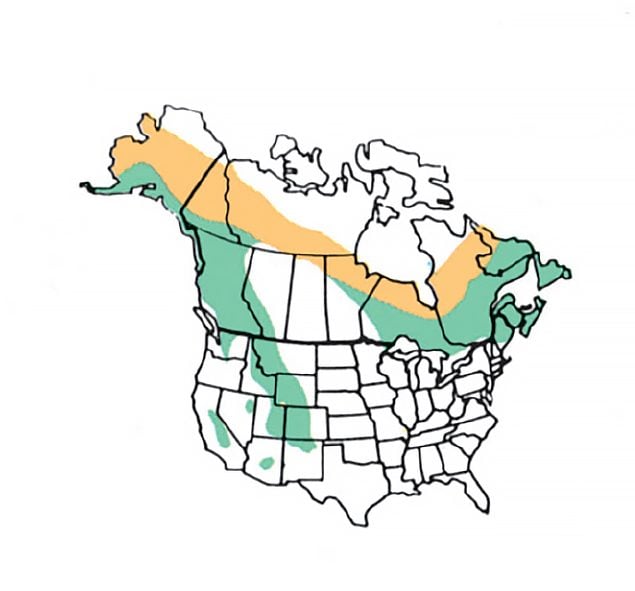Head Up North to See Pine Grosbeaks
Updated: Nov. 29, 2021
Pine grosbeaks are a common species in Canada's boreal forests and the western mountains. This tame oversized finch adds color to the late fall landscape.

How to Identify Pine Grosbeaks
Nicknamed “mopes” by Newfoundlanders for their subdued and approachable personalities, pine grosbeaks tend to freeze rather than fly when they feel threatened. Passersby usually walk right by without noticing the robin-size birds among subalpine conifers where they breed during summer. They’re easily spotted foraging for seeds, berries and buds in the winter. Pine grosbeaks are named for their stubby, thick bills, which they use to munch seeds and snip buds and needles off trees. Showy pink-red feathers on the male’s head, chest and back, and bold black-and-white bars on its wings brighten backyards when these feeder-friendly birds show up.
Learn about the 5 grosbeaks backyard birders should know.
Female and Juvenile Pine Grosbeaks
The female is the same size as her mate and has appealing plumage, too, with a yellow head and rump, and white-banded wings. Juvenile males resemble females until their second year, though some immature males have tints of red or orange sprinkled among their body feathers.
Learn how to identify rose-breasted grosbeaks.

Pine Grosbeak Nests and Eggs
During breeding season, males warble loudly from a treetop, announcing their territory, while females make a nest of twigs, roots and grass in the crux of sturdy spruce or fir branches. Ironically, pine grosbeaks rarely nest in pine trees. Lichen, evergreen needles and feathers soften the inside of the nest. Females lay three or four 1-inch blue spotted eggs. After two weeks, the eggs hatch. Both males and females care for the featherless newborns.
Adults mainly eat plants, though they forage for insects while raising their young. The birds ingest bugs along with plant matter, which they digest into a paste and then store in pouches on either side of their tongue before regurgitating the mixture into the mouths of their nestlings. At about three weeks old, the young ones fledge and start to forage on their own. Mom and Dad do supplement their diet for a while. Learn the five stages of a baby bird’s life.
How to Attract Pine Grosbeaks

During irruptions, pine grosbeaks flock to feeders filled with black oil sunflower seeds, hulled sunflower seeds or suet. The Cornell Lab of Ornithology suggests using large sturdy tube, platform or hopper feeders, as pine grosbeaks are hefty songbirds. Once they find a winter food source, they typically stay until it’s depleted. Keep feeders full and they may delight you all the way to spring. Having seed-bearing plants and berry-producing trees and shrubs definitely helps, too!
Go west to see black-headed grosbeaks.
Pine Grosbeak Call
During breeding season, mated pairs show their monogamous bond with identical flight calls. Other times, flocks that forage together use similar calls as a way to keep track of the group. According to naturalists at Rocky Mountain National Park, if you toot like a pygmy-owl, pine grosbeaks might show up and sing along.
Discover the top songbirds in America.

Pine Grosbeak Range
Pine grosbeaks are common in Canada’s expansive boreal forests and near the timberline in the mountain regions of the western U.S. They usually don’t migrate far, but they do irrupt further south and to lower elevations where mountain ash, crabapple, maple and winter staples are plentiful.
Yellow: Summer
Green: Year-round




















